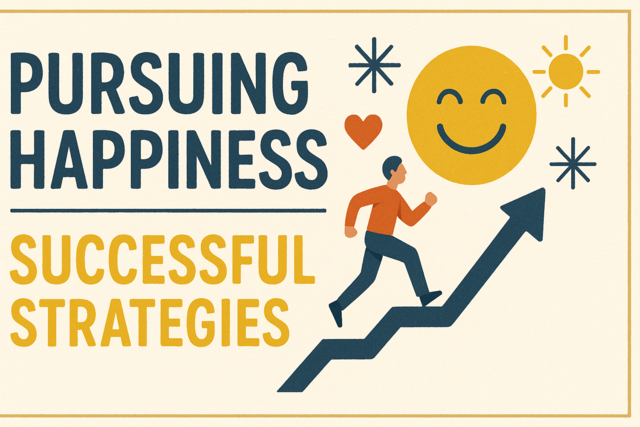Key Definitions
1. Priority creditor � This is a creditor whose claim is first in order of lien.
2. Secondary creditor � This is a creditor whose claim is second in order of lien.
3. Arrears � A debt that ought to have been already paid.
4. Sanction � A threatened penalty for not repaying a debt.
5. Disposable income � Income remaining after the deduction of all mandatory charges and taxes.
Introduction
The increased accessibility of credit facilities via banks, loans, and cards has resulted in a sharp rise in debt and the number of people experiencing financial difficulties. However, it is only after your repayments to lenders have reached a point where they are not leaving you with enough money to pay your bills that your debt situation is deemed uncontrollable.
It's good to note that no matter how deep into debt you are, a sound debt reduction plan goes a long way to ease your troubles. This article details a 7-step debt reduction plan that work:
1. Contacting Your Creditors
Here is a typical letter that you can send to all your lenders informing them about your financial situation.
After receiving replies from all your lenders, design a schedule of all your debts and divide it into primary/priority lenders and secondary lenders (see the 2nd step). It is vital at this step to mark all debts where court orders have been issued or a claim form have been sent and seek professional help since these loans require immediate attention.
File copies of all correspondence with your lenders; both received and sent. If any agreement is later made by phone, get the details of the individual you spoke with and make sure that the contract is confirmed in writing and signed by the right person.
It is very important to check and confirm that you responsible for all the debts you are required to pay. You're not accountable for your wife's debts, unless you have both signed a contract stating otherwise, and you cannot inherit another person's debt (a dead person).
Also, verify the amount being claimed to make sure that all the payments you have submitted so far have been deducted. Dispute excess penalty charges or interest.
2. Deciding Your Priorities
Different debts have different interest rates and repayment terms; some carry more strict penalties and terms than others and thus need to be repaid first. Priority classification shouldn't be based on the amount of arrears, the period of debt, the threat being made or even the size of the debt, but on the real legal sanction the lenders have against you for recovery. Priority debts are often defined as debts where non-payment can result in:
-
Losing your home
-
Imprisoned
-
Losing essential services or goods
The table below shows a list of priority debts as well as the legal sanction for non-payment:
|
Type of Debt |
Final Sanction for Non-payment |
|
Rent |
Eviction |
|
Electricity/gas |
Pre-payment meter/disconnection |
|
Secured loan/mortgage |
Loss of house |
|
Water |
No legally enforceable |
|
Maintenance/CSA order |
Taken from benefits/wages or imprisonment |
|
Council tax |
Taken from benefits/wages, imprisonment or bailiffs |
|
VAT and inland revenue |
Imprisonment, bankruptcy or bailiffs |
|
Magistrate fines |
Imprisonment or bailiffs |
Priority debts need to be paid before any payment or offer is made on a secondary debt. A secondary debt is a debt that does not carry the above penalties. The table below shows examples of secondary debts and their sanctions.
|
Type of Debt |
Final Sanction for Non-payment |
|
Personal loan(unsecured) |
Court judgment |
|
Store/credit cards |
Court judgment |
|
Overdraft/bank loan |
Court judgment |
|
Credit sale |
Court judgment |
|
Hire purchase* |
Loss of goods |
|
Catalog** |
Court judgment |
|
Loan shark*** |
Not legally enforceable |
|
Pawnbroker |
Keep pledge |
|
Loan from friends/family*** |
Court judgment |
Note:
-
If the goods in question are essential goods, for instance, a car or washing machine needed for work, this debt should be treated as a priority debt. Otherwise, the creditor can easily reclaim the goods if your current payment is less than 1/3 of the total amount.
-
Catalog debts are often hard to enforce as there are no standard practices to fill a formal credit contract � they should be classified under secondary debts.
-
Personal circumstance may imply that some debts be treated as priority debts, although not lawfully enforceable, for instance, money owed to friends, loan sharks or family.
Before you submit any offer of repayment to your creditors, you should have a financial statement (see the 3rd step).
3. Preparing Your Financial Statement
The third step involves preparing a statement of your current financial position. Your statement should include all the income you receive from different sources and all the money you spend as well as what you spend it on.
Use either your weekly or your monthly income and expenditures, but do not mix the two in the same financial statement. Show clearly which figures you have used � weekly or monthly.
Note:
-
To convert your weekly figures into monthly figures divide by 12 and then multiply by 52.
-
To convert your monthly figures into weekly figures divide by 52 and then multiply by 12.
For instance, annual payments such as insurance premiums, road tax, television license, etc should be divided by 52 to give a weekly figure or by 12 for a monthly figure. In addition, allow for irregular or unexpected expenditure like house and car maintenance, replacement, or repairs. Note the following;
-
It is very important to take all the expenditures into consideration, but do not include payments for secondary lenders or arrears at this step because you want to find out the total amount of cash you have to make suitable offers to your priority creditors.
-
Remember to incorporate in your expenditure statement all the cash deducted from your income before you receive it such as subscriptions and rent.
-
Your wages should include all the allowances or additional pay you receive from your employer such as travel allowance, but should not include temporary allowance.
The table below shows a sample financial statement:
|
FINANCIAL STATEMENT |
|||
|
Name |
|||
|
Address |
|||
|
Date prepared |
|||
|
No of children in household |
No of adult in household |
||
|
INCOME monthly/weekly |
|||
|
You |
Partner |
Total |
|
|
Wages |
|||
|
Child benefit |
|||
|
Part-time job |
|||
|
Job seeker's allowance |
|||
|
Child maintenance paid to |
|||
|
Sickness and disability benefit |
|||
|
Pension |
|||
|
Rent |
|||
|
Other |
|||
|
Total Household Income |
|||
|
EXPENDITURE monthly/weekly |
|||
|
PRIORITIES |
Amount Spent |
||
|
Endowment policy |
|||
|
Rent/board/mortgage |
|||
|
Secured loan.2nd mortgage |
|||
|
Council tax |
|||
|
Child maintenance paid by |
|||
|
Water charges |
|||
|
Gas |
|||
|
Electricity |
|||
|
Ground rent/service charges |
|||
|
Vehicle finance/hire purchase |
|||
|
County court judgment/court fines |
|||
|
Self employed |
|||
|
Television license |
|||
|
National insurance |
|||
|
Income tax |
|||
|
VAT |
|||
|
Total Priority Costs |
|||
|
LIVING COSTS |
|||
|
Meals at work/School meals |
|||
|
Housekeeping and food |
|||
|
Footwear/clothing |
|||
|
Diesel/petrol |
|||
|
Telephone |
|||
|
Vehicle running cost (insurance, tax, etc) |
|||
|
Fares (train, bus, etc) |
|||
|
Rentals (video, TV, etc) |
|||
|
School costs |
|||
|
Dentist/optician/prescriptions |
|||
|
Nursery/child minder |
|||
|
Alcohol/cigarettes |
|||
|
Pension/life insurance/investments |
|||
|
Contents insurance/building |
|||
|
Other |
|||
|
Total Living Costs |
|||
|
Total Household Costs |
|||
|
TOTAL Household Cost (1) |
|||
|
TOTAL Household Income (2) |
|||
|
TOTAL left after subtracting (1) from (2) |
|||
Review your income before you finalize your statement to see if you can increase it in any way (see the 4th step) and review your expenditures to see if you can make any saving (see the 5th step). In addition, your financial statement needs to be reviewed regularly to incorporate any change in your expenditure and/or income as well as to reflect any subsequent agreement for repayments to be remitted to your lenders.
4. Maximizing Your Income
Ensure that you incorporate all your income, and then look for ways to increase or earn more income. We will look at other ways to increase your income in another lesson. But here are some of the possibilities:
-
Job seekers allowance � This is for the unemployed people or the redundant ones.
-
Working tax credit and child tax credit � For low-income people.
-
Income support � For low-income people who fulfill certain criteria relating to sickness, work, savings, age, etc.
-
Disablement or incapacity benefits, including attendance and mobility allowance.
-
Income tax relief or rebate
-
Child maintenance
-
Council tax relief and housing benefits
-
Part-time job
-
Non-dependants or grown-up kids contributions
Income maximization is a critical step of debt reduction plan and lenders will want to see the options you have considered.
5. Reviewing Your Expenditure
You should include all your household expenditures and other financial obligations in your financial statement, whether regular or not. Variable bills such as fuel or gas bills should be averaged over the year and the use of stamps, tokens or budget plan may help with this.
Lenders may dispute the amount you spend on fuel, travel, clothing, food, etc, and therefore, you should reduce these to a more realistic level; according to the circumstance and size of your family. Moreover, you might need to justify the cost of using your car against the cost of using a public transport. For instance, is it necessary for drive to school, shopping, work, etc because public transport is not available? Holiday and leisure costs might also be disputed by lenders, along with costs of a lottery, pets, alcohol, cigarettes, etc.
Once again, review your expenditure thoroughly to ensure that everything is incorporated and all rational savings have been included. Ensure that your total income is more than your total expenses; otherwise, your debt will keep on increasing. However, be realistic because you will need to live or survive on this budget for a few years, so focus on reducing your non-essentials items rather than essentials such as heating and food.
Once you complete your expenditure and income review, finalize your current financial statement before you send it to your lenders as part of your debt reduction negotiation plan (see the 6th and 7th steps).
6. Negotiating With Your Priority Creditors
The total amount of money you will have for clearing your debts will be given by the difference between your total income and your total expenditure. In case you are in arrears, you might first need to talk with your priority creditors � this should be done as soon as possible to avert maturity of their sanctions. It is always good to make an offer even if a legal proceeding for the recovery has been initiated.
Note:
When negotiating with all your creditors:
-
You should offer your extra income to all your creditors � not just one.
-
Begin your negotiation with the debt close to its ultimate sanction.
-
Do not feel pressurized or obliged to pay more than what you can afford � it is vital to sustain these payments once you begin.
-
Do not reveal reference and account details to any other person other than the concerned creditor.
-
Even if your creditors do not agree to your offer, begin paying as you will be reducing your arrears and they might change their minds when they see that you are serious about paying them.
-
Make sure that you get a receipt for every payment you make and any oral agreement must be confirmed in writing.
As you continue to agree on the payment with every creditor, include this in your statement so that other lenders can see your present situation and you can adjust your budget.
In case you do not have any extra income for your creditors after reviewing your income and expenditures, you still need to contact them and show them your position with a statement.
7. Negotiating With Your Secondary Creditors
The last step of a debt reduction plan is to update your financial statement, after agreeing on offers of payment for all your priority creditors, to see if there is any money to repay your secondary creditors � the non-priority debts. The best way to distribute this income is according to the amount you owe each creditor.
List all the secondary debts on a sheet as shown in the table below and then, add them up (assume you have $100 per week (disposable income) to pay your secondary lenders).
|
Schedule of Secondary Creditor |
||
|
Name Date |
||
|
Creditor |
Amount owed $ |
Offer per week $ |
|
Flexible credit card |
4,000 |
40 |
|
Right car finance |
1,000 |
10 |
|
Northern loan |
3,000 |
30 |
|
ABC catalogue |
2,000 |
20 |
|
TOTAL |
10,000 |
100 |
-
You can make an offer to every secondary creditor using the above figure.
-
You can use the same letter as the one for priority creditors and remember to attach your financial statement.
The path to becoming debt free begins with a clear debt reduction plan � it might be short for some and long for others. In either way, the importance thing is to become debt-free and debts proof your future.
























